(2016-2018) Porsche 911 GT3 R (991.1) – Ultimate Guide
Date of unveil by Porsche AG: May 15, 2015 / Market launch: December 2015
Press Release
Based on the 911 GT3 RS production sports car, Porsche has designed a customer sport race car for GT3 series around the world: The 911 GT3 R. In developing the more than 368 kW (500 hp) racing nine-eleven, special attention was paid to lightweight design, better aerodynamic efficiency, reducing consumption, improved handling, further optimised safety as well as lowering service and spare parts costs.
Adopted from its production sibling, the 911 GT3 R features the distinctive double-bubble roof, and the wheelbase which had been lengthened by 8.3 centimetres compared to the previous generation. This ensures a more balanced weight distribution and more predictable handling particularly in fast corners corners in comparison to the previous GT3 R. By applying systematic lightweight solutions for the body, add-on parts, and suspension, the engineers significantly optimised the centre of gravity position of the GT3 R compared to the predecessor model. The lightweight body design of the 911 GT3 RS production sports car featuring intelligent aluminium-steel composite construction has proven to be the ideal basis for the race car. The roof, front cover and fairing, wheel arches, doors, side and tail sections as well as the rear cover are made of particularly light carbon-fibre composite material (CFRP). All windows – and for the first time even the windscreen – consist of polycarbonate.
Powering the new 911 GT3 R is a cutting-edge four-litre flat-six unit which is largely identical to the high-performance production engine of the road-legal 911 GT3 RS. Direct petrol injection, which operates at pressures up to 200 bar, as well as variable valve timing technology ensure a particularly efficient use of fuel. Moreover, the normally-aspirated engine offers significantly better driveability and a broader usable rev range. Power from the rear engine is transferred to the 310 mm rear wheels via a Porsche sequential six-speed constant-mesh gearbox. As in the GT road-going models of the 911, the driver changes gears via shift paddles conveniently positioned on the steering wheel.
The aerodynamics of the 911 GT3 R also follows the example of the road car. The distinctive wheel arch air vents on the front fairings increase downforce at the front axle. Measuring two metres in width by 40-centimetres in depth, the rear wing lends aerodynamic balance. From its 911 RSR big brother, the GT3 R has adopted the concept of the centrally-positioned radiator. By eliminating the side radiators, the position of the centre of gravity was improved, the radiator is better protected against collision damage, and the venting of hot air through louvers in the front cover was enhanced.
The brake system of the 911 GT3 R also underwent further modifications and, thanks to increased stiffness and more precise control of the ABS, is even better suited to long distance racing. At the front axle, six-piston aluminium monobloc racing brake callipers combined with ventilated and grooved steel brake discs with a diameter of 380 millimetres ensure outstanding braking performances. Fitted at the rear axle are four-piston callipers and discs measuring 372 millimetres.
Another development focus was on the safety features of the GT3 R. The capacity of the further-reinforced FT3 safety fuel cell was increased by twelve litres to now hold 120 litres, with the tank now featuring a fuel cut-off safety valve. The doors and the side windows can be removed, and the escape hatch in the roof is now larger. In the event of an accident, the new racing bucket seat offers pilots even better protection.
The new Porsche 911 GT3 R can be ordered immediately for 429,000 Euro plus country-specific VAT and will be delivered from December 2015.
Technical specification and comparison
| Car | 911 991.1 GT3 R | 911 991.1 RSR |
911 991.1 GT3 Cup
|
| Purpose | 2016-2018 FIA GT | 2013-2015 FIA GTE Pro |
Porsche Carrera Cup, Porsche Supercup
|
| Engine | 4000 cc, bore 102.0 mm, stroke 81.5 mm | 3996 cc, bore 102.7 mm; stroke 80.4 mm |
3800 cc, bore 102.7 mm, stroke 76.4 mm
|
| Power | 368 kW without restrictor | 345 kW with restrictor | 338 |
| Gearbox | Sequential 6-speed | Sequential 6-speed |
Sequential 6-speed
|
| Front brakes | 380 mm steel disc, 6-piston caliper | 380 mm steel disc, 6-piston caliper |
380 mm steel disc, 4-piston caliper
|
| Rear brakes | 372 mm steel disc, 4-piston caliper | 355 mm steel disc, 4-piston caliper |
380 mm steel disc, 4-piston caliper
|
| Front tyres wheels |
30/65-18, 12.0×18 ET17 | 30/68-18, 12.5×18 ET25 |
27/65-18, 10.5×18 ET28
|
| Rear tyres wheels |
31/71-18, 13.0×18 ET37.5 | 31/71-18, 14.0×18 ET50 |
31/71-18, 12.0×18 ET53
|
| Tank L | 120 | 94 | 100 |
| Dimensions | 4604 x 2002 | 4537 x 2002 | 4537 x 1851 |
| Weight | *1220 kg / 2689 lb | *1220 kg / 2689 lb |
1200 kg / 2645 lb
|
The Story
The suspension and brakes of the 991 GT3 R were tested at the VLN long distance race on the Nürburgring-Nordschleife on 17 October, 2015. The engine in the test car was the well-proven powerplant from predecessor models as the new DFI (Direct Fuel Injection) engine was undergoing test runs in Weissach and in the USA. Compared to the 997, the wheelbase is 3.3″/83 mm longer.
The 991 GT3 R became available from December 2015 for the 2016 racing season that had new FIA rules for GT cars. Despite the 2016 991.2 Carrera already launched, the 991 GT3 R customer racing cars retained the looks of the 991.1 generation (factory team did not use the GT3 R).
The body panels of the 991 GT3 R are naturally made of carbon-fibre reinforced plastic (CFRP). All windows are made of polycarbonate and starting with the 991 GT3 R, also the windscreen. In accordance with the new FIA safety rules, the door windows are removable in addition to the slightly larger escape hatch in the roof. The doors are also removable. The engine is the same as in the street legal 991 GT3 RS, except the air for the engine is taken through the openings on the rear lid (the show-off side air intakes seen on the 991 GT3 RS are not used on the real racing car). The 120 litre FT3 cell has fuel cut off safety valve in accordance with FIA regulations. Like with the earlier racing versions, the air jack system with four jacks has been built into the car. The bucket seat can be adjusted fore/aft. The seat has adjustable padding system to suit individual drivers. With drivers under 80 kg, ballast has to be installed in the car.
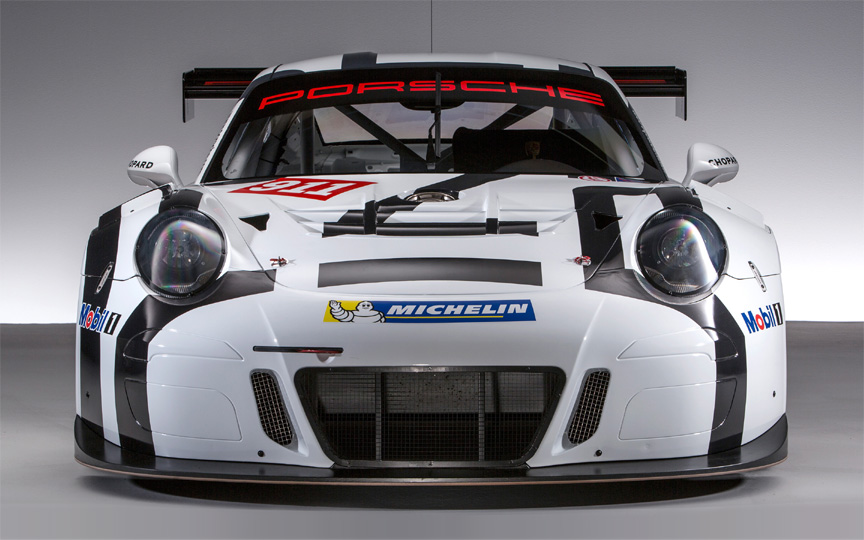
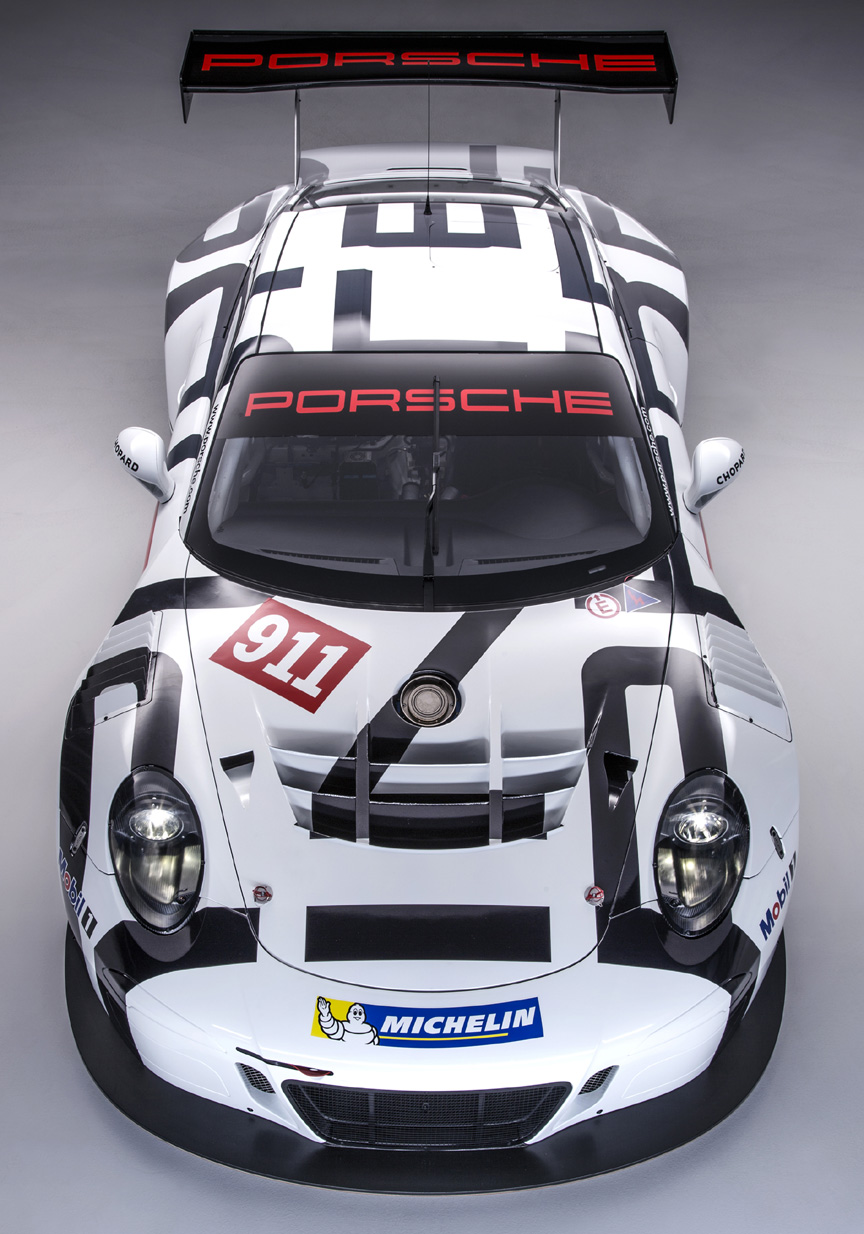
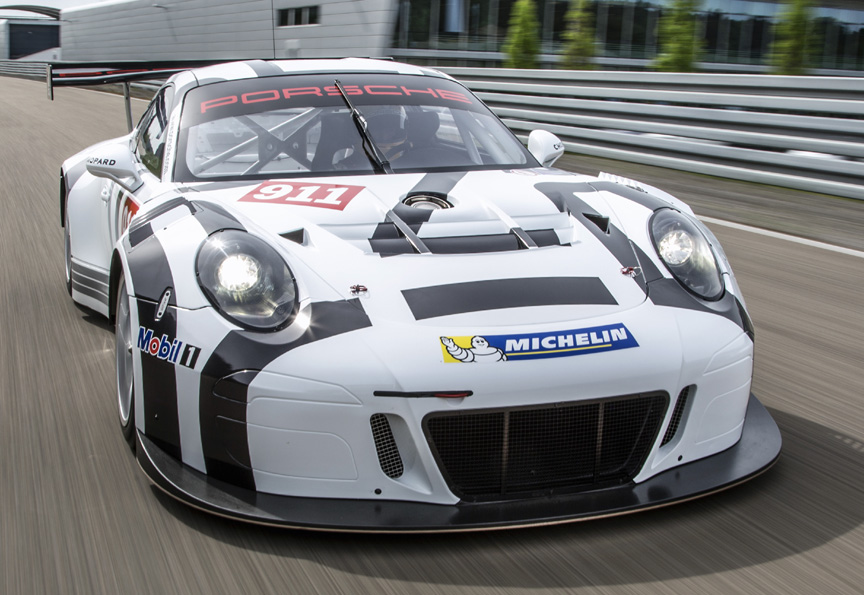
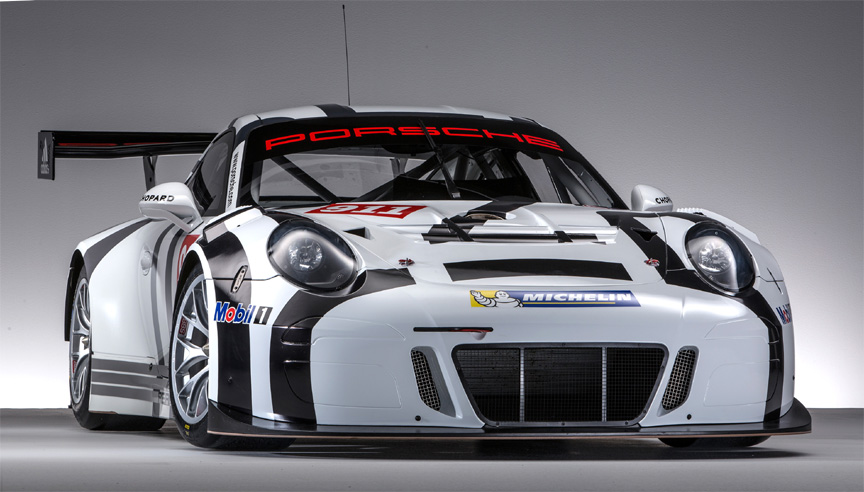
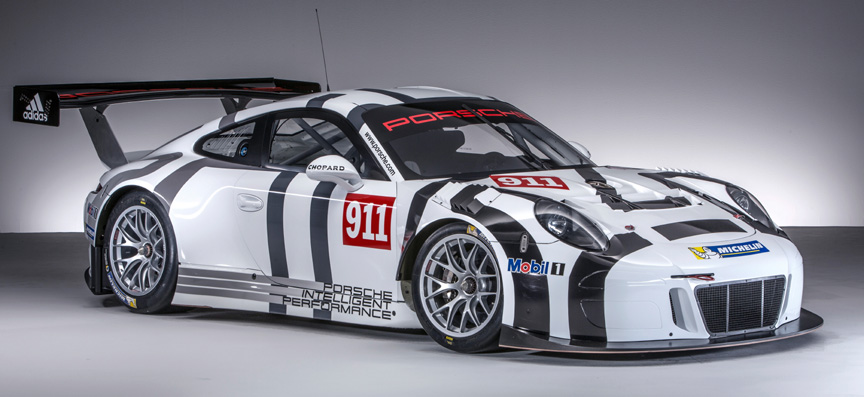
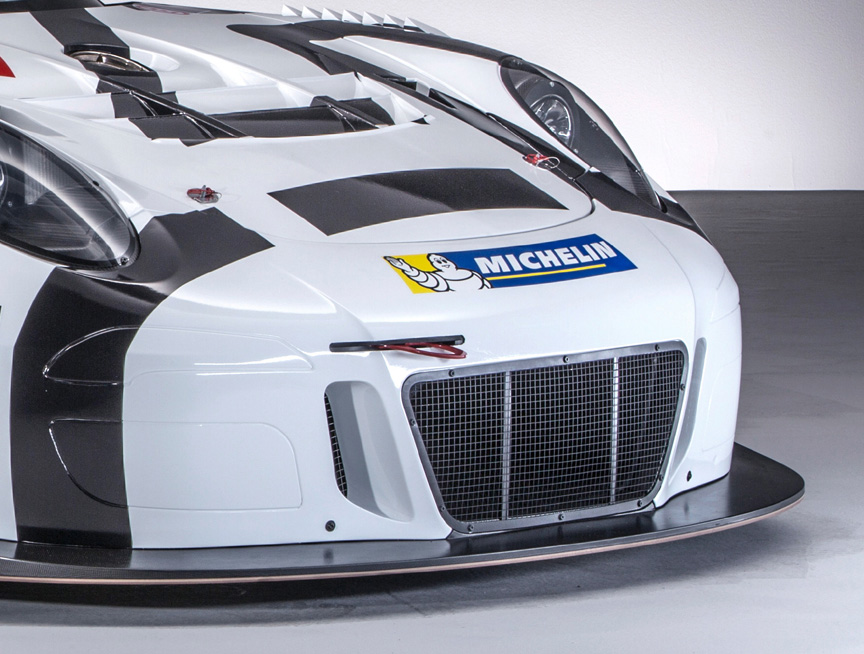
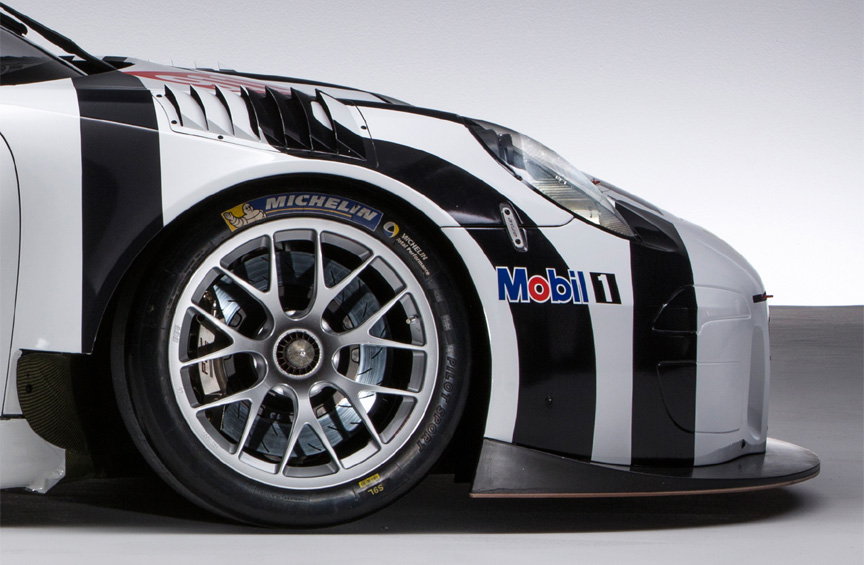
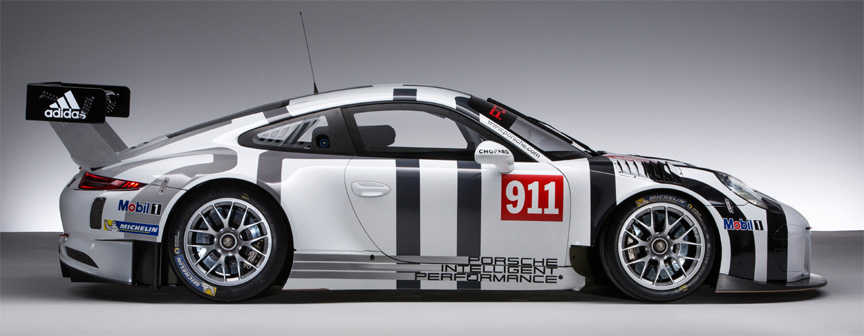
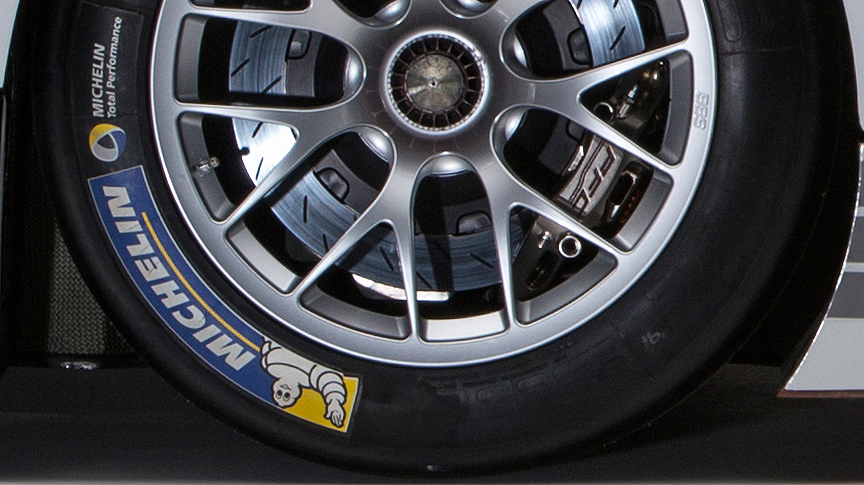
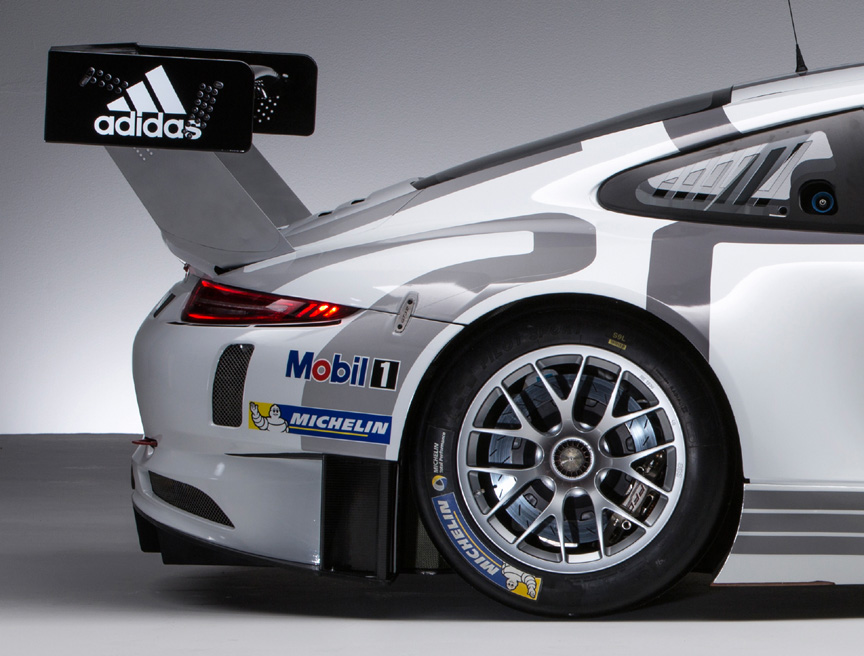
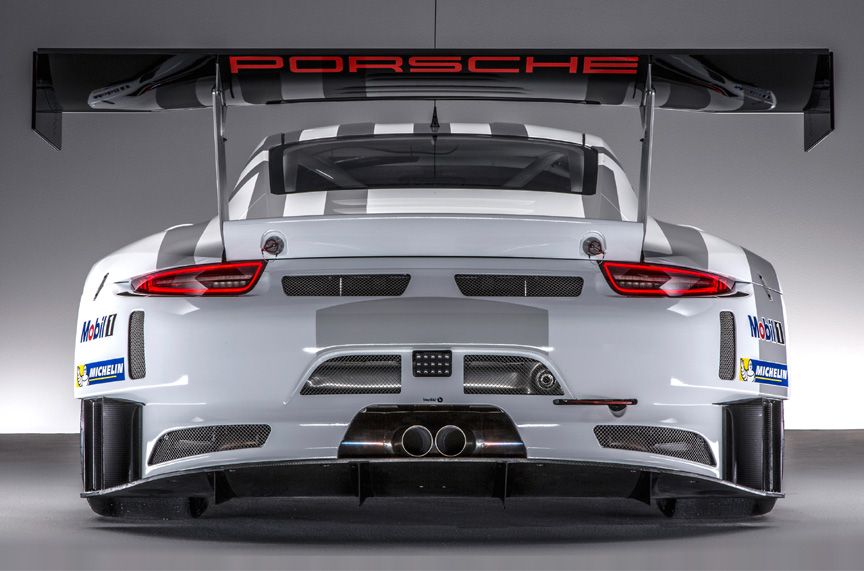
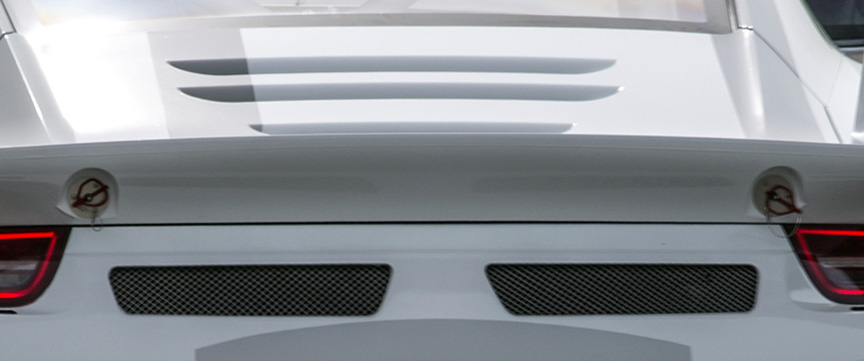
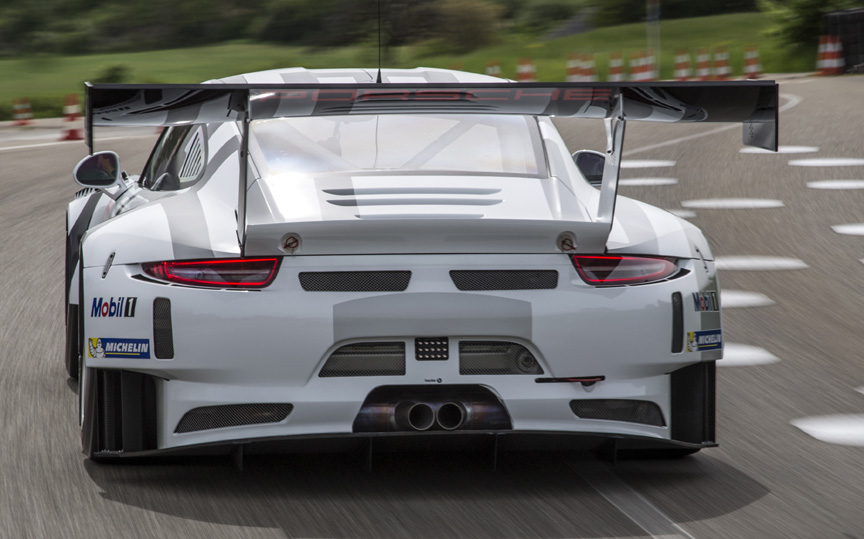
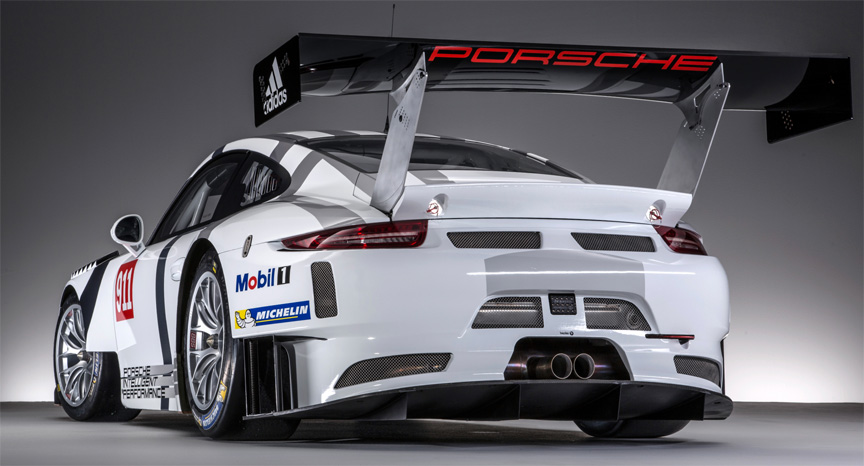
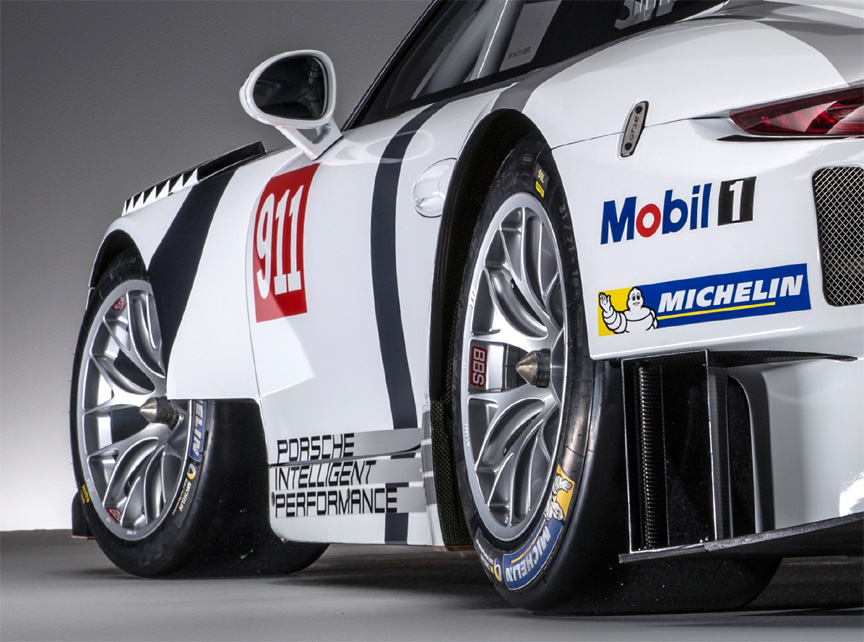
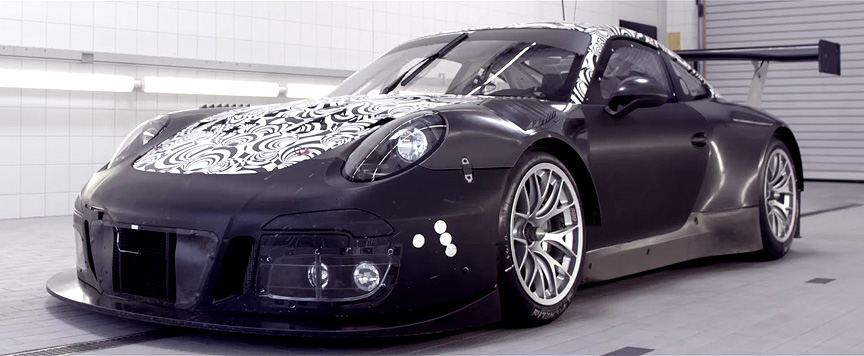
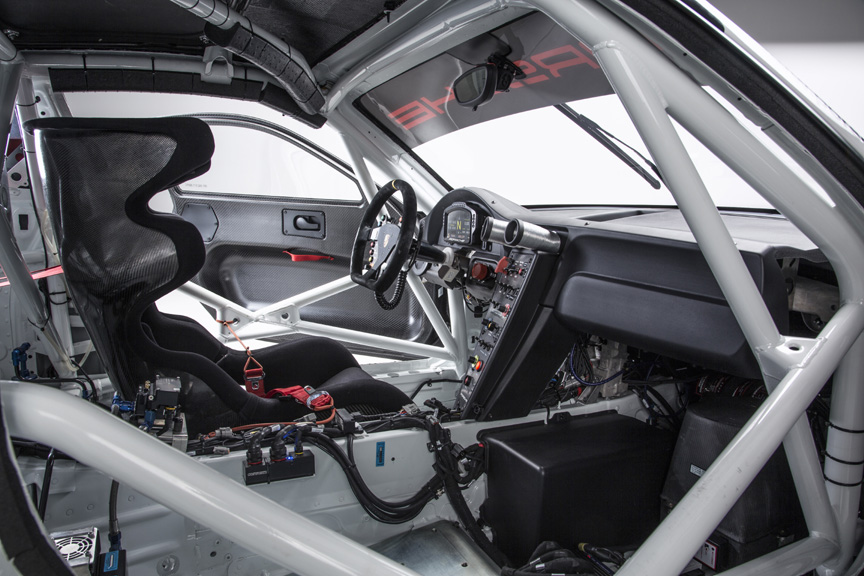
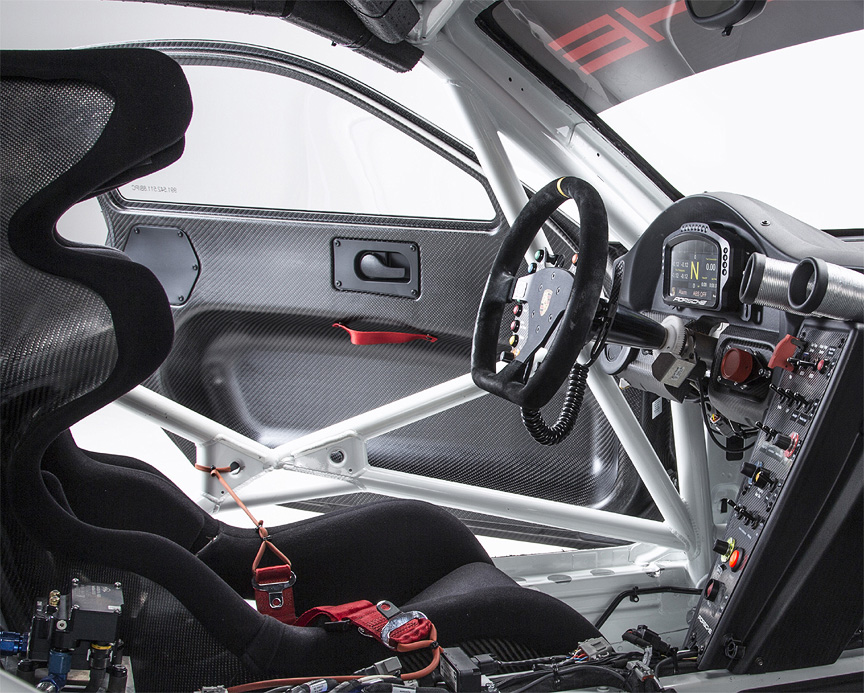
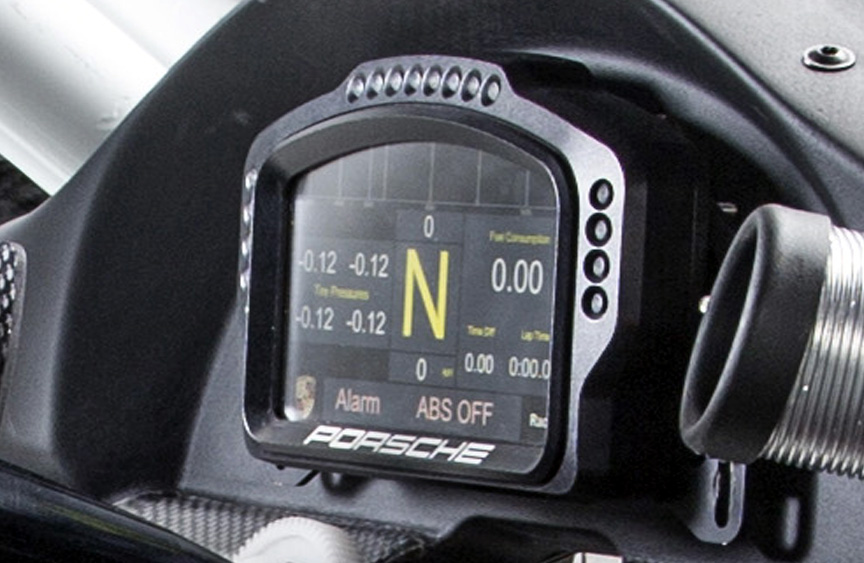
2016 FIA GT World Cup
On November 19-20, 2016, a racing event called Macau Grand Prix was held and a once-in-a-year FIA GT World Cup event within it. A pre-race comment from Porsche driver Kévin Estre (911 GT3 R #912): “The street circuit in Macau is one of my top 3 racetracks – it’s very fast and incredibly difficult, with many bumps and blind corners. There are no run-off areas, only walls and guard rails. You have to focus from start to finish and you can’t afford to make the slightest mistake. The many fans lend a great atmosphere. For the majority of drivers it’s the last race of the year, so they’ll be doing everything to head into the winter break with a victory under their belts.”
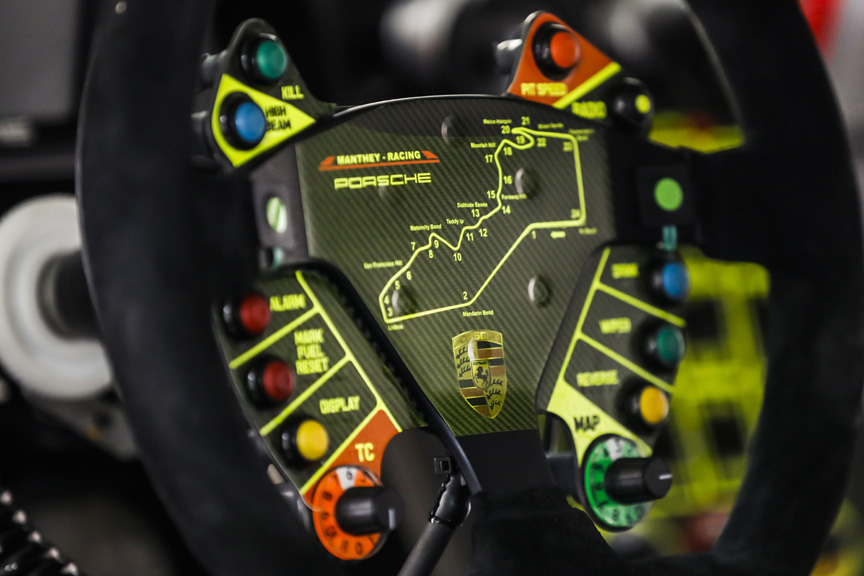
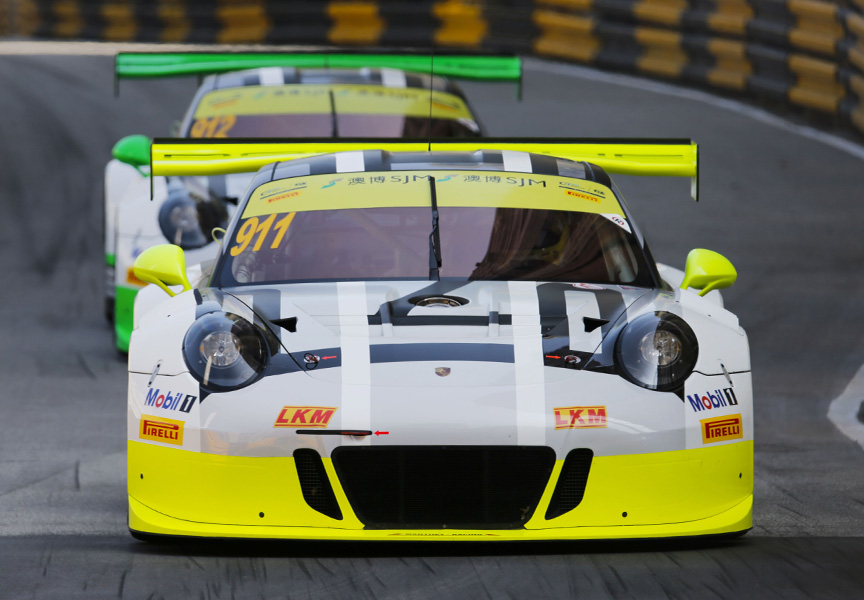
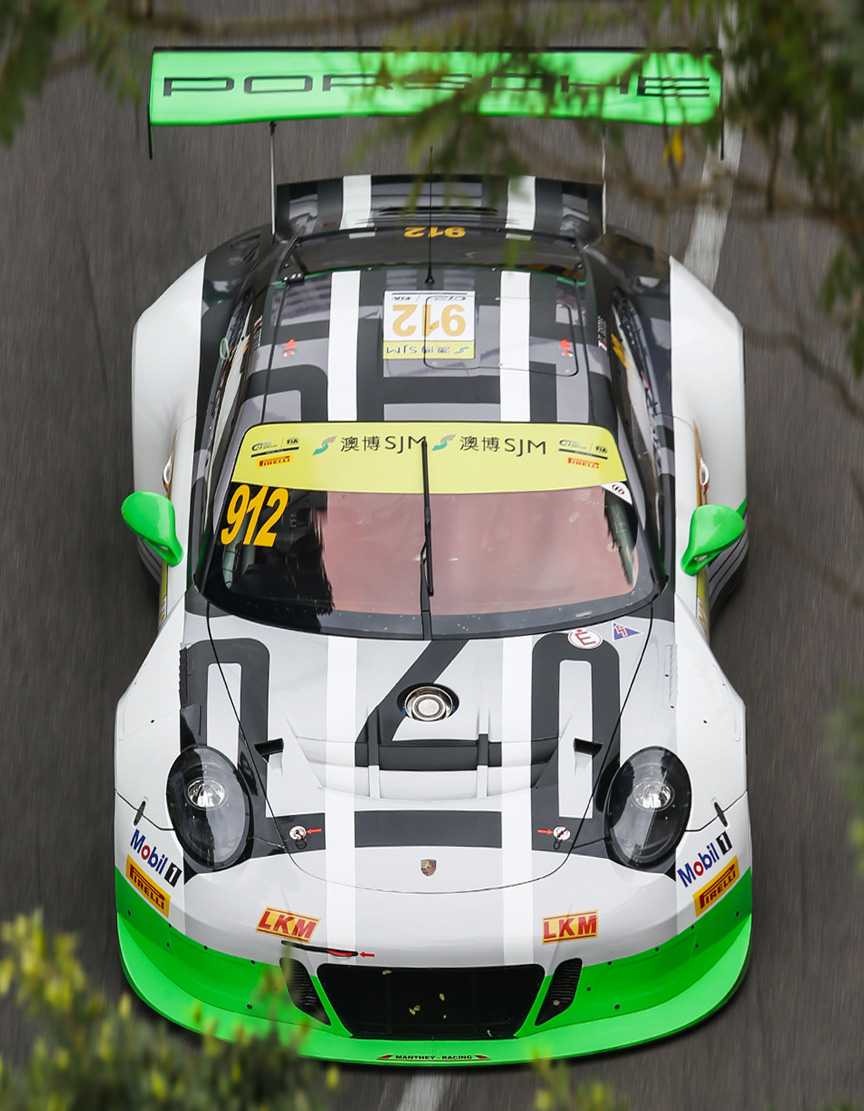
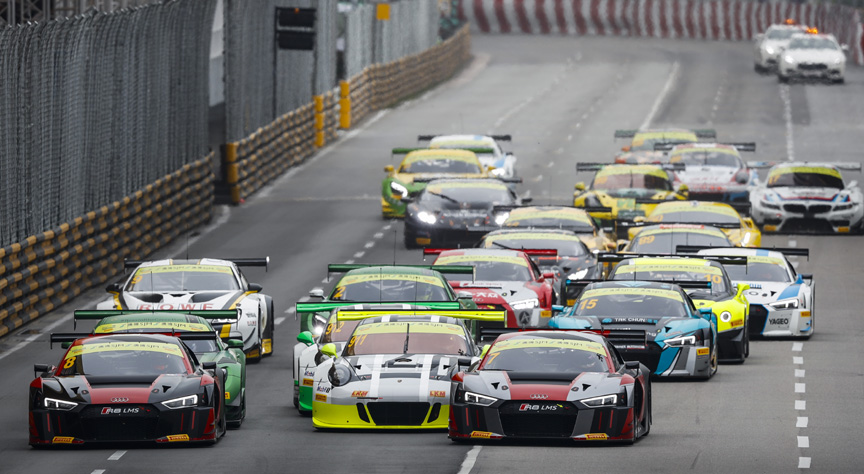
The Macau Grand Prix hosted the TCR International, three local (Macau/Chinese) series and 2 FIA races (GT and F3). The Macau street track is narrow, slippery and has no run-off areas, so the accidents happened all weekend long. The most spectacular crash happened during the FIA GT World Cup race when a second place Audi R8 landed on its roof. The GT race was terminated after this incident. Although the race was supposed to be 18 laps long, with many accidents only 1 or 2 timed laps could be counted. At the moment when the race was terminated, two Porsche 991 GT3 R were leading (1. Earl Bamber #911, 2. Kevin Estre #912). According to the rules the positions of the last full lap were accounted for the race and it meant that Laurens Vanthoor who landed his Audi R8 on the roof, was named as the winner of the race (Porsche didn’t bother to make a scene out of the situation as Vanthoor was already contracted to be a Porsche factory driver from next season). In addition to Earl Bamber not winning, he also got a time penalty for dangerous take-over. The take over was perfecty perfect, so the stewards must have had their nervs fully eaten up as the flying Audi was around 50th (!!!) car that crashed into the guardrails during this weekend. More crashes followed in the last race of the day, the Formula 3 World Cup.
2017 Dubai 24h victory
The 991 GT3 R took 1-2 victory at the 2017 Dubai 24 hour race. The fastest cars in the race were the A6-Pro class cars that included Porsche 991 GT3 R, Mercedes-AMG GT3, Audi R8 LMS and Lamborghini Huracan GT3. The race was won by Herberth Motorsport 991 GT3 R driven by Brendon Hartley, Robert Renauer, Ralf Bohn, Daniel Allemann, Alfred Renauer. The 991 GT3 R of Manthey-Racing (driven by Sven Müller, Matteo Cairoli, Otto Klohs and Jochen Krumbach) had a puncture towards the end of the race and couldn’t fight for the victory.
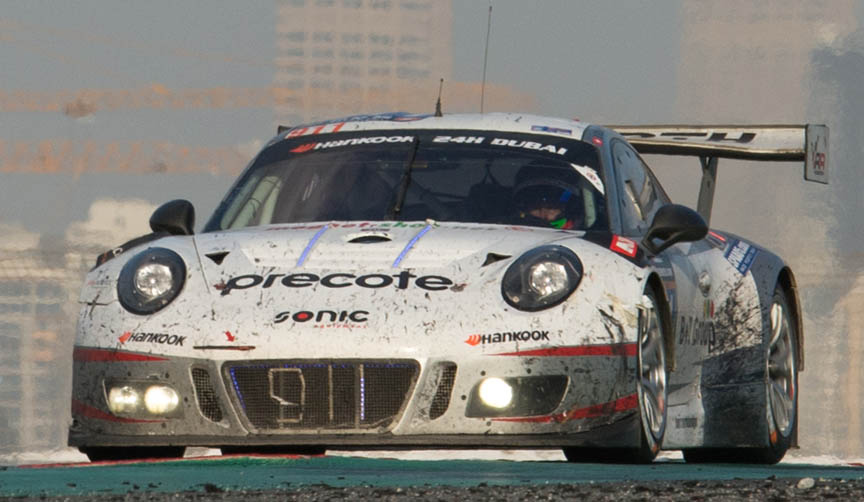
2017 Daytona 24 class victory
Alegra Motorsports won the GTD (GT Daytona) class with the 991 GT3 R driven by Carlos de Quesada, Michael de Quesada, Daniel Morad, Jesse Lazare and Michael Christensen (Porsche factory pilot). The first five GTD cars (Porsche, Audi R8, Mercedes-AMG GT3, Audi, Acura NSX GT3) all covered 634 laps and were within 8 seconds after 24 hours! For Porsche, this was the 77th class victory at Daytona 24 hour race.
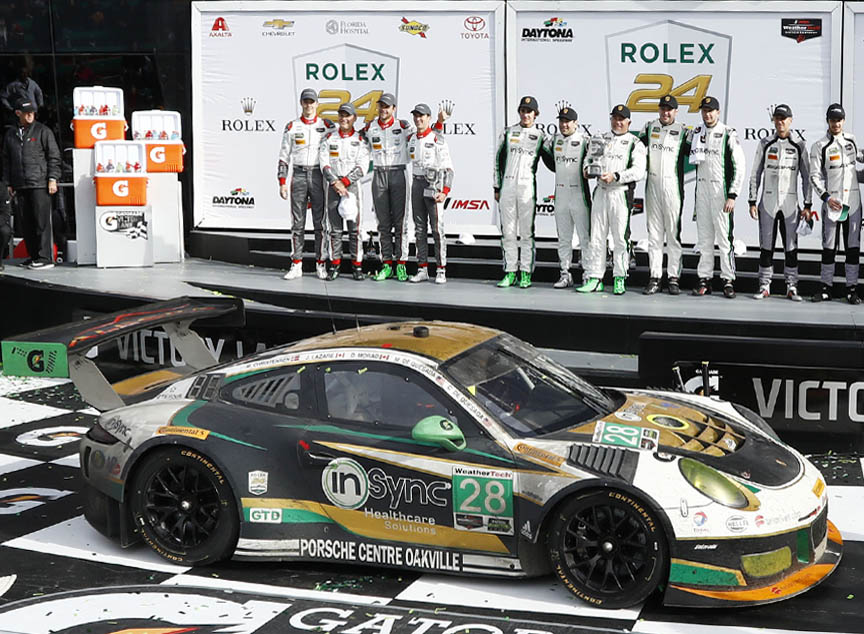
2017 Bathurst 12 hour class victories
2017 was the first time when full professional driver teams (class APP) were allowed and the overall victory was taken with a Ferrari 488 GT3 (290 laps). Second place overall and pro-am class (APA) victory was taken by Patrick Long, Marc Lieb, Matt Campbell and David Calvert-Jones with 991 GT3 R (289 laps). Third place overall was taken with Bentley GT3. Fourth place overall and amateur class (AAM) victory was taken by Liam Talbot, John Martin and Davashen Padayachee with another 991 GT3 R (289 laps).
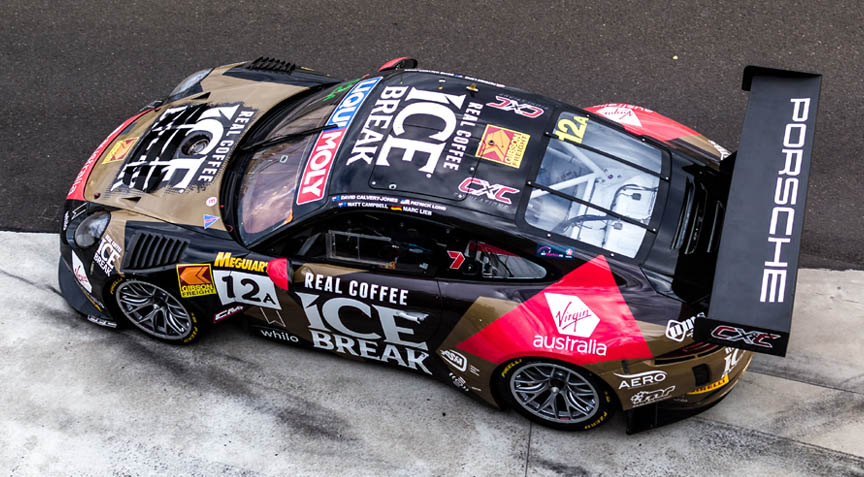
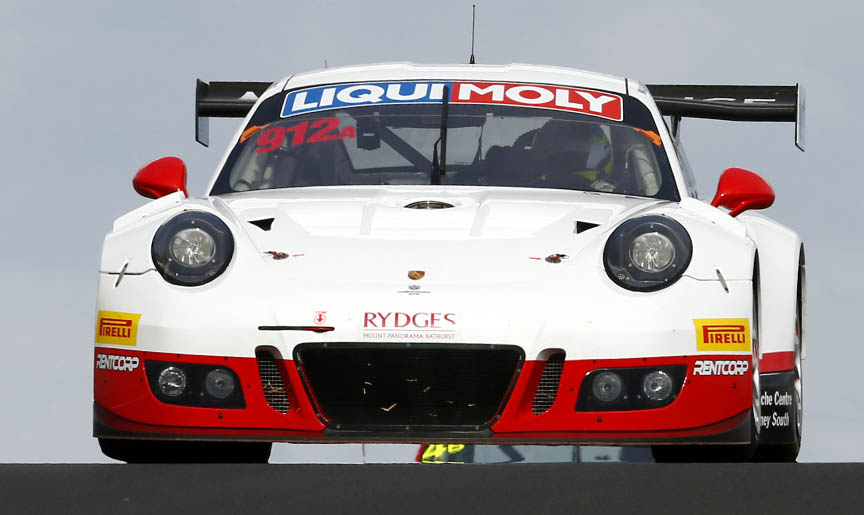

2018 upgrade
The parts kit, which can be used to update all 2016 and 2017 911 GT3 R, includes amongst other things a new front lid for the optimisation of thermal management and side flicks to improve the aerobalance.
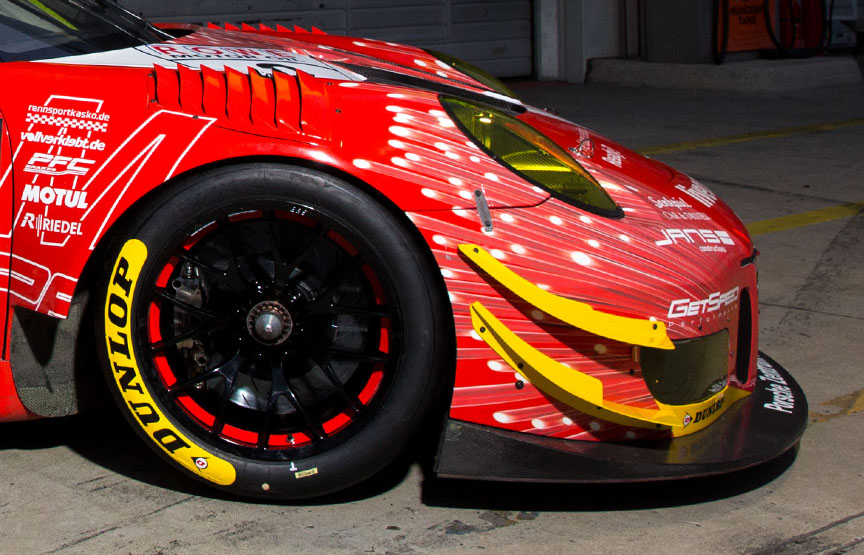
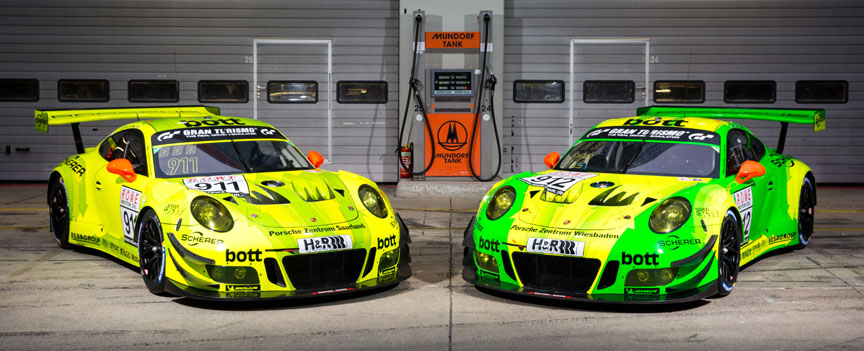
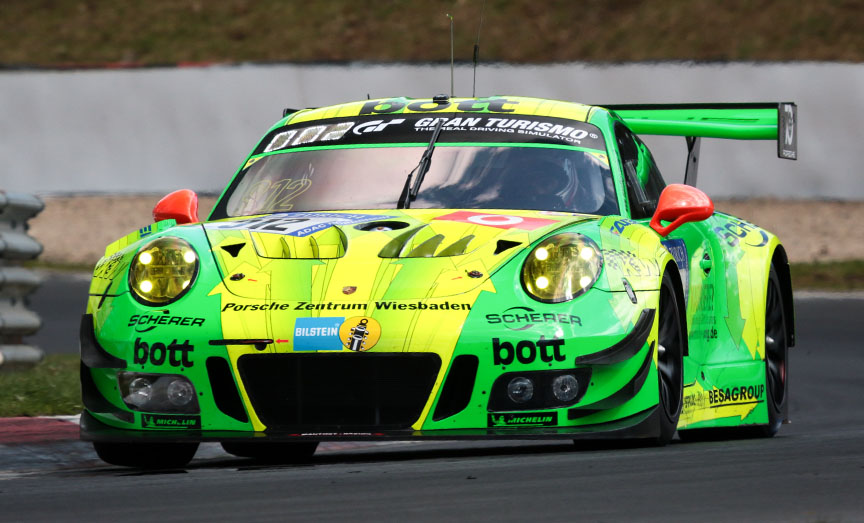
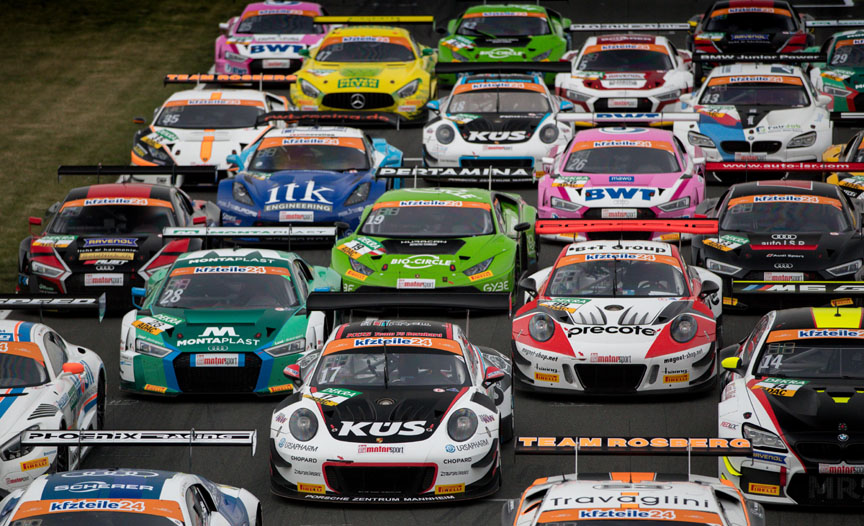
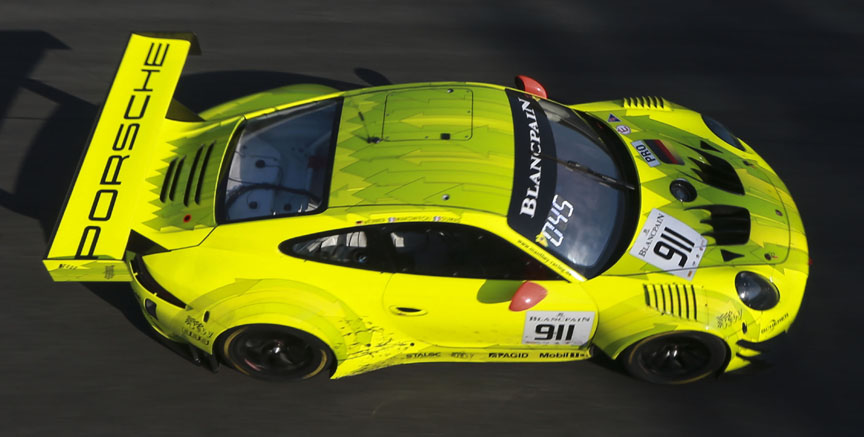
2018 Nürburgring 24h
More than 200.000 spectators and more than 500 drivers in 148 cars – this is the craziest 24 hour race in the world, held at the Nürburgring’s combined tracks of Nordschleife and the GP track (combined length 25.3 km/15.7 miles). With 43 vehicles, Porsche was the most strongly represented manufacturer. The driver list included so many famous Porsche drivers: Andre Lotterer, Dennis Olsen, Dirk Müller, Dirk Werner, Earl Bamber, Fred Makowiecki, Jeroen Bleekemolen, Jörg Bergmeister, Kevin Estré, Lars Kern, Laurens Vanthoor, Lucas Luhr, Maro Engel, Matt Campbell, Matteo Cairoli, Michael Christensen, Nick Tandy, Nicki Thiim, Patrick Pilet, Rene Rast, Richard Lietz, Romain Dumas, Sven Müller, Wolf Henzler and others (to be correct, not all of them drove Porsches in this race).
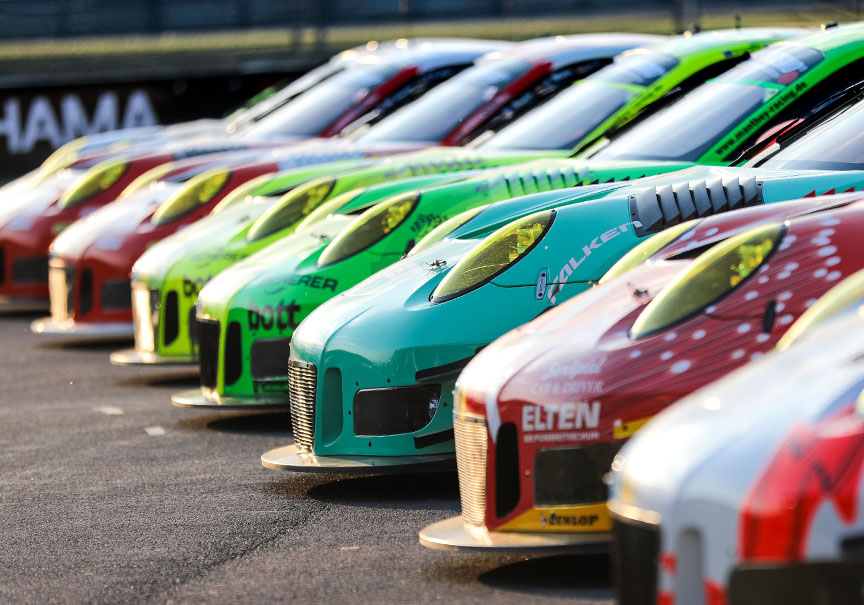
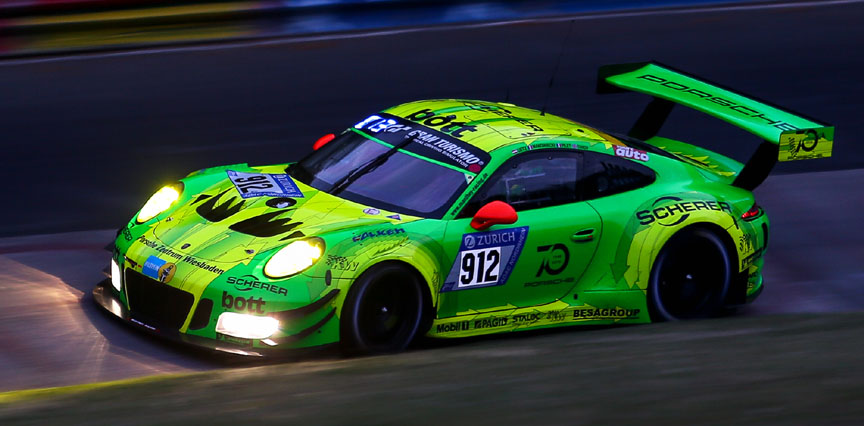
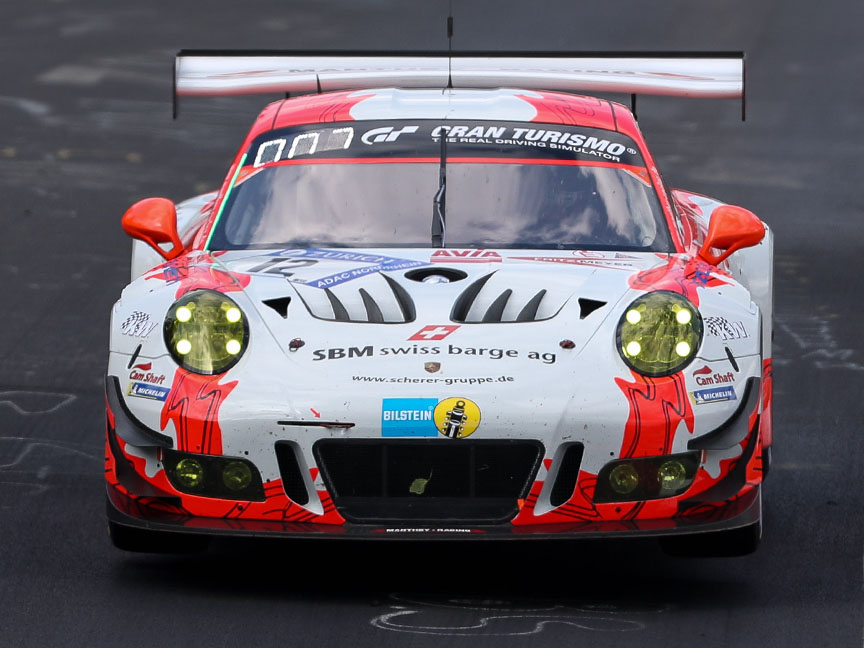
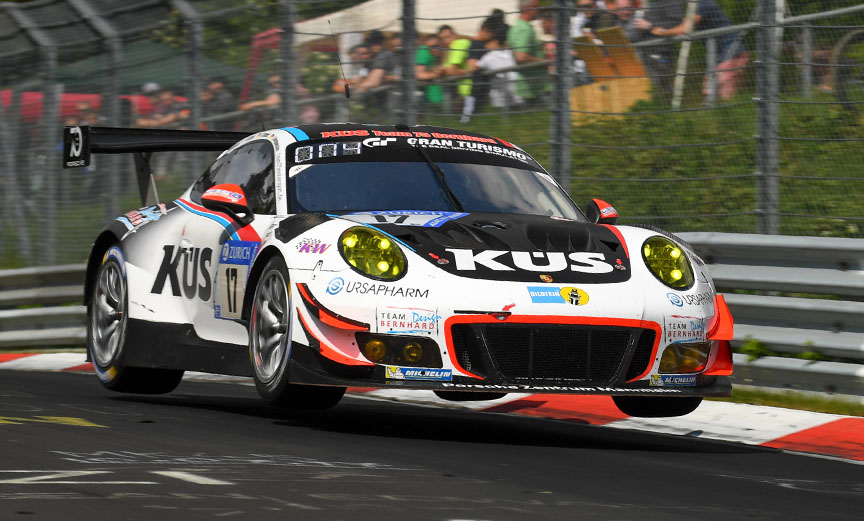
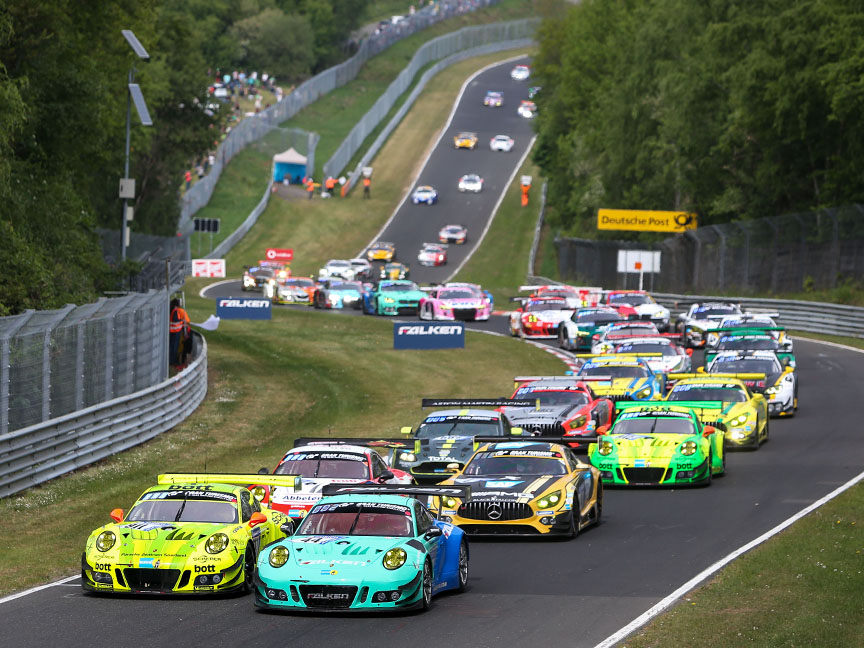
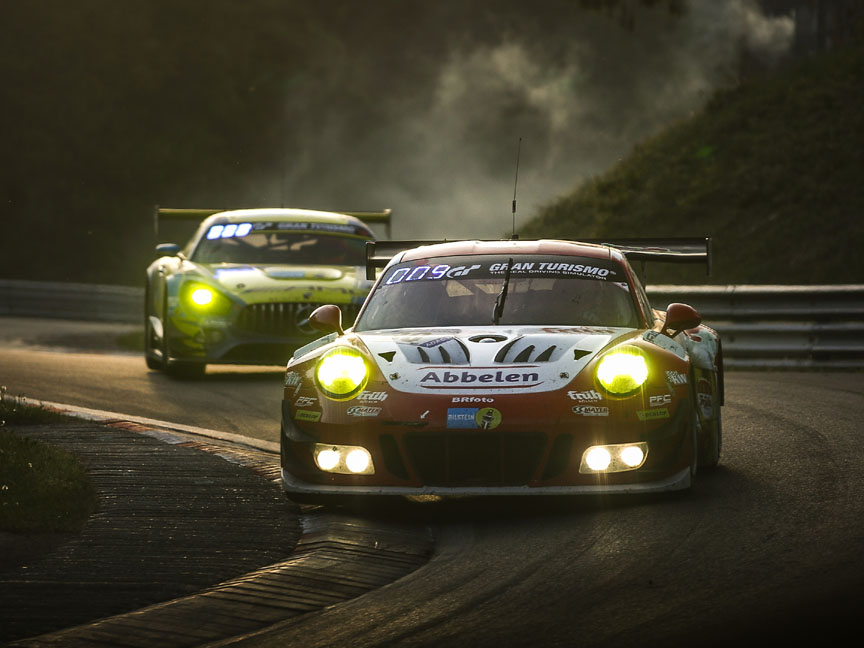

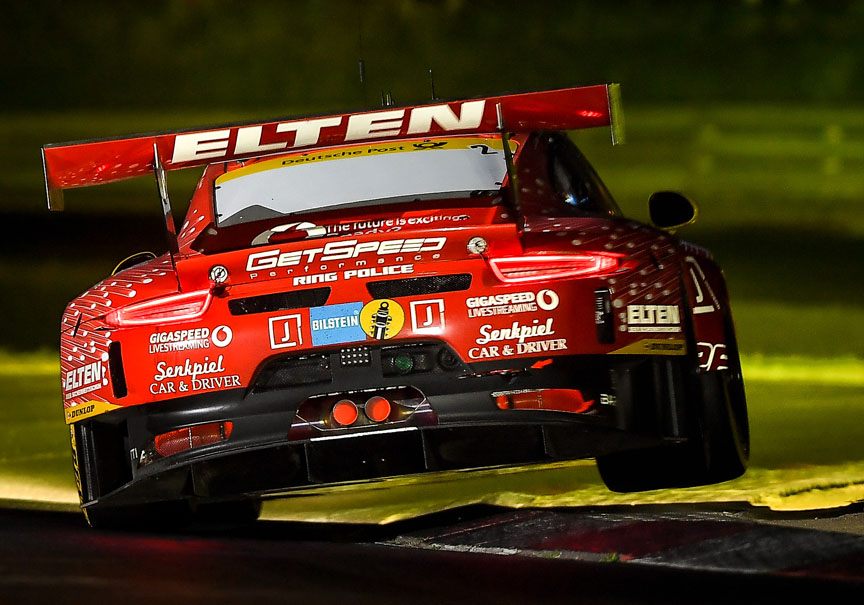
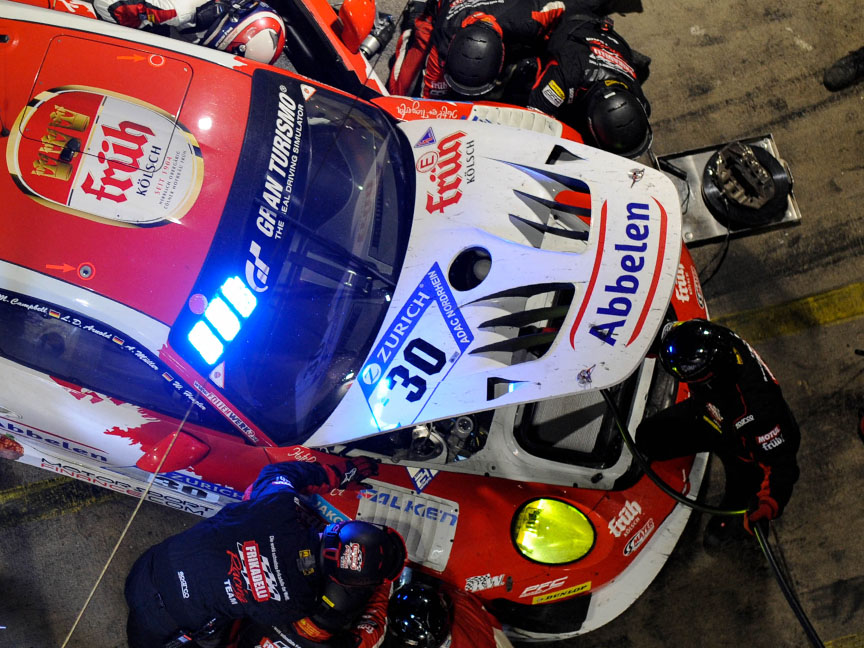
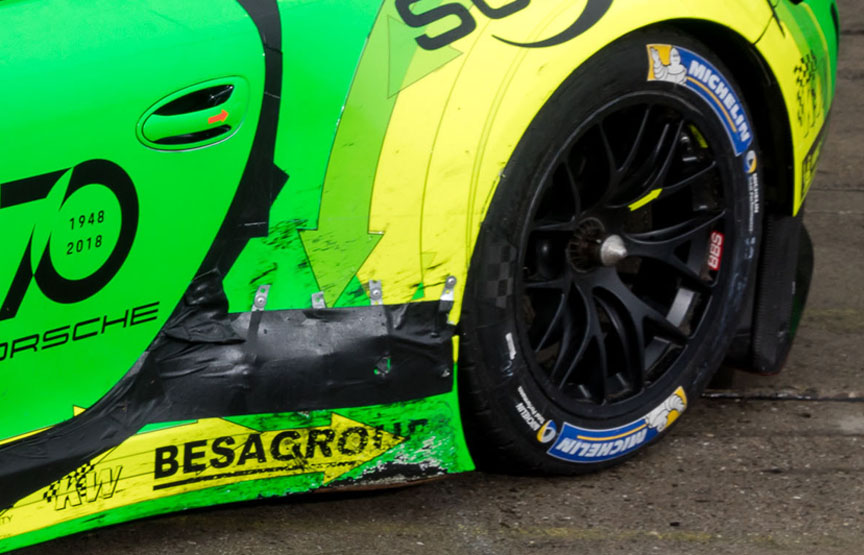
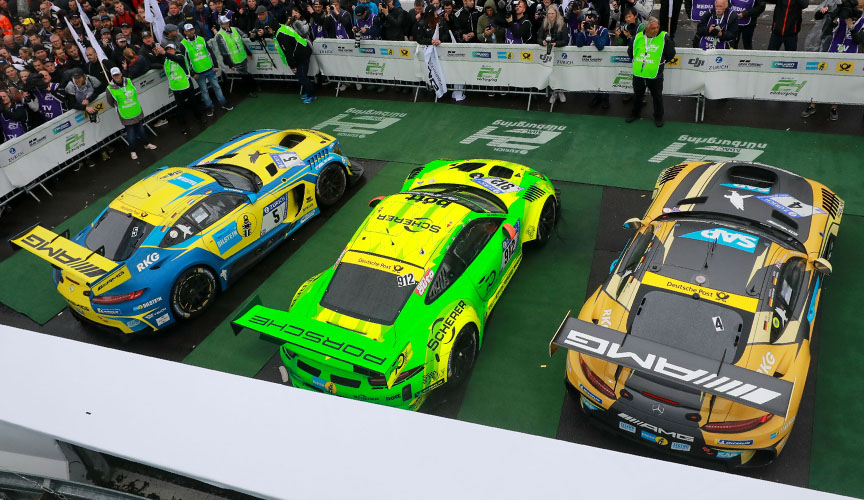
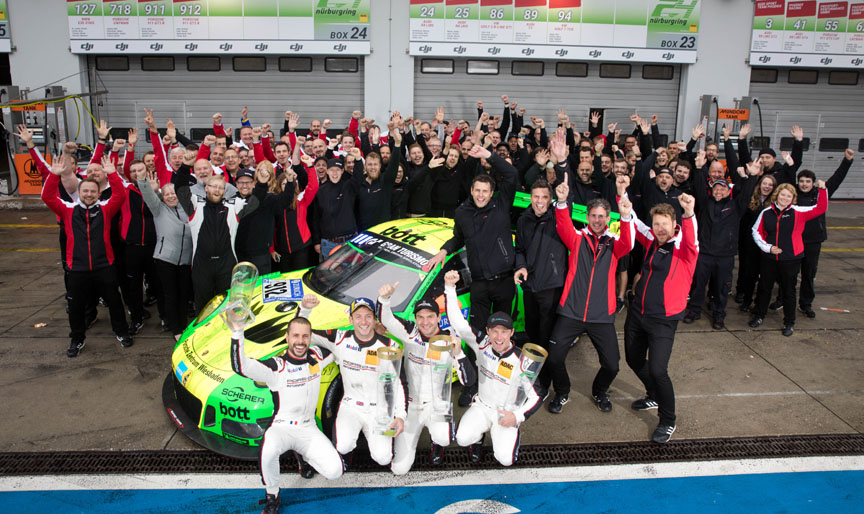
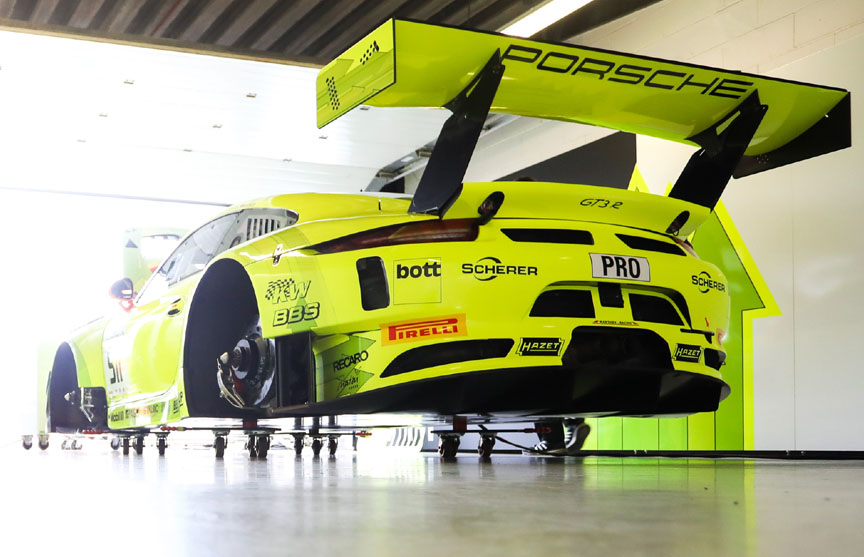
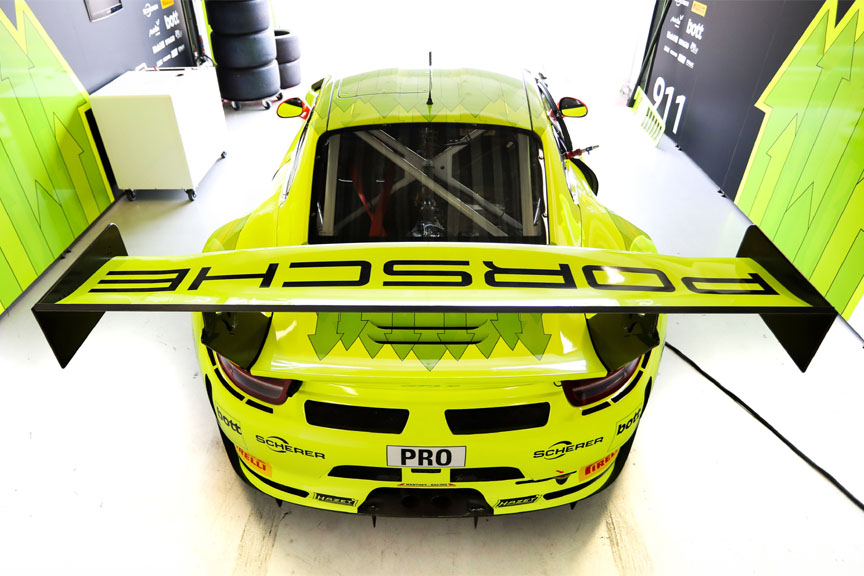
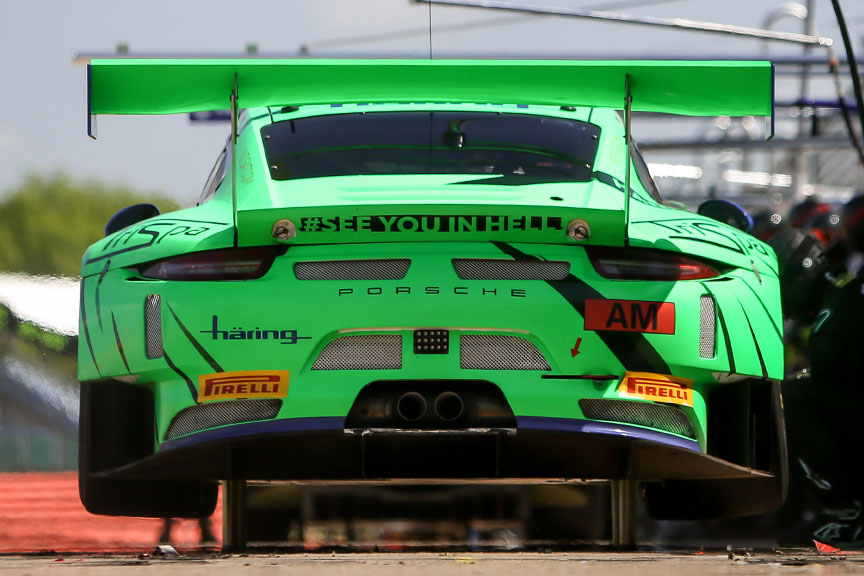
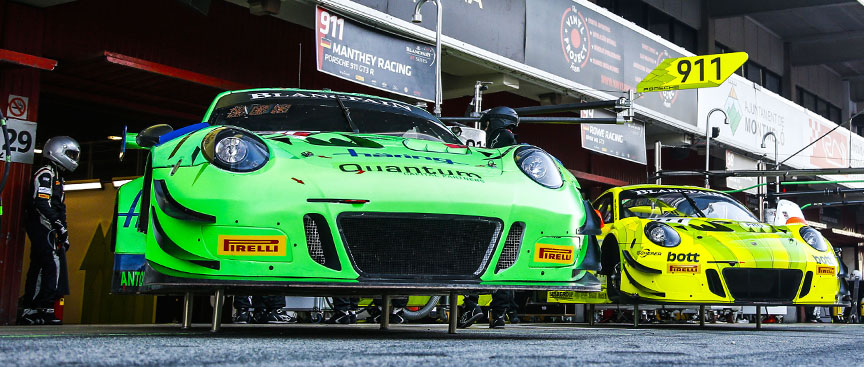
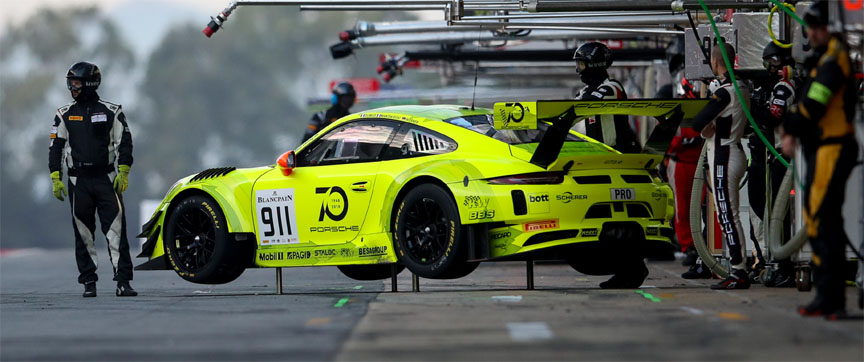
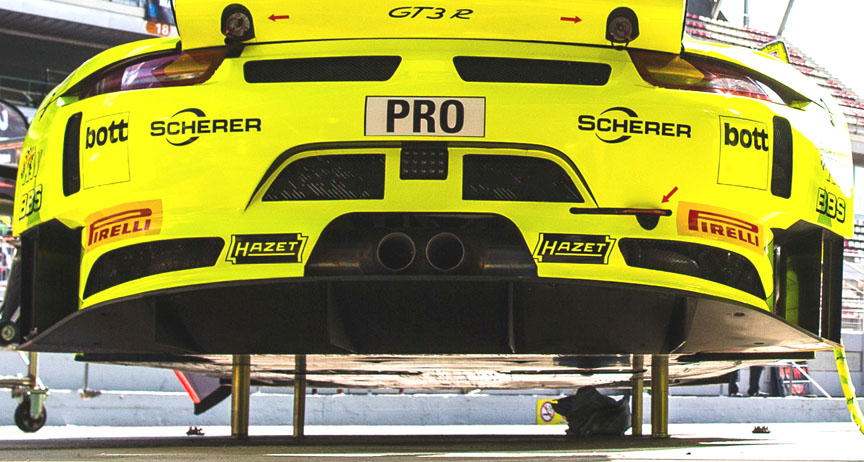
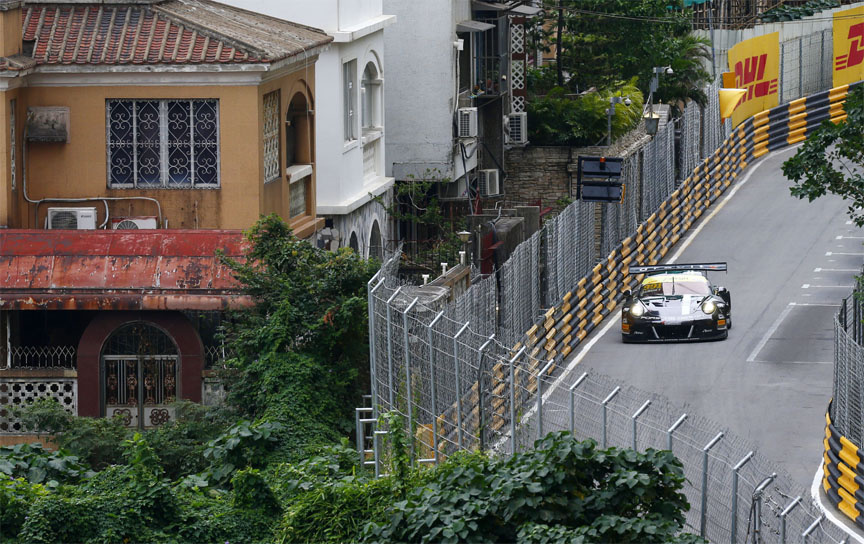
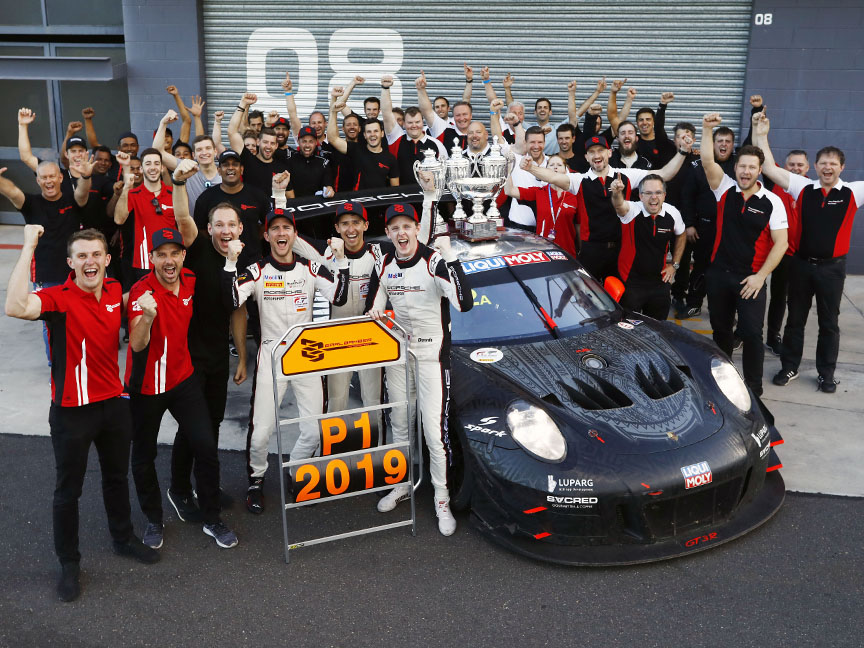


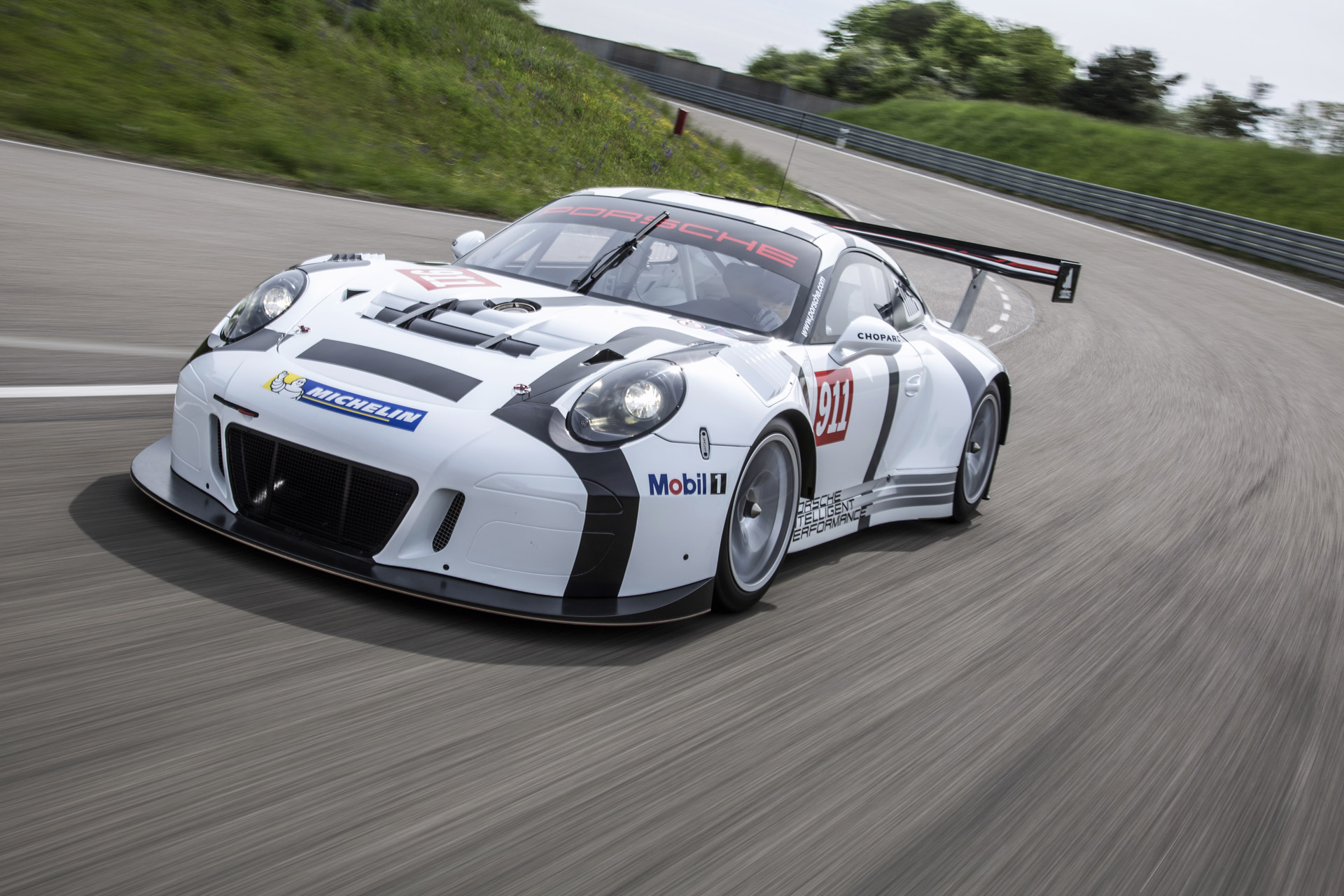




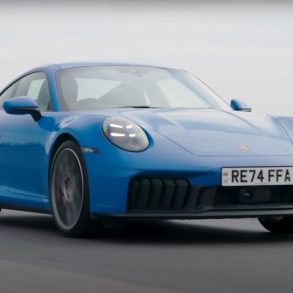

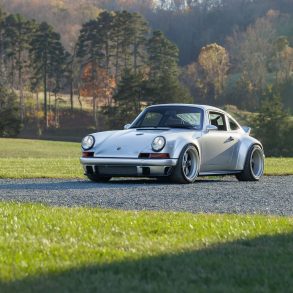
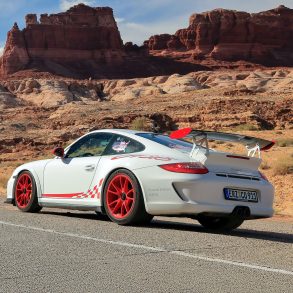
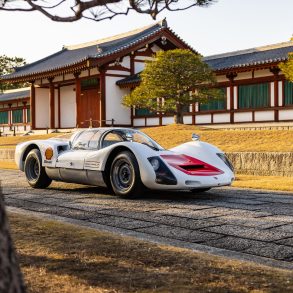

Maybe someone fixed the C rand() function recently but based on what I learned 30 years ago spinlocks are the least of the problems with rand()
0